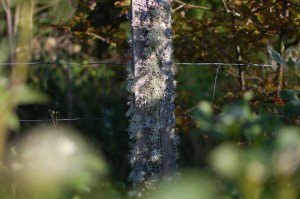 There are several aspects of humankind’s activity that contribute towards defining the feel of an area, a region.
There are several aspects of humankind’s activity that contribute towards defining the feel of an area, a region.
Architecture is one of the most obvious. It is a particular kind of joy to witness the shifts in building styles that are influenced and dictated by the changes in materials available, and local customs and quirks that have manifested themselves over generations.
As well as these obvious elements, there are many other subtleties that take time to filter through to one’s conscious appreciation.
Fence posts, for example.
For quite a while after moving here, while driving around, I felt a general sense of ‘rightness’ when looking out at the fields parcelling up the rolling hills, and couldn’t place where it came from. The hedging is similar in style to the south west of England where we moved from, the same blocks of rotated crops, grazing livestock that wouldn’t look out of place in many other agricultural areas, the familiar regularity of fencing creating a sense of order, the …
Oh, wait …
The majority of fencing that we had encountered elsewhere was constructed from very regularly sized, perfectly round or square posts of uniform length, manufactured from imported softwoods. Perfectly functional, but characterless.
Almost without exception, the posts in use in the fencing around here are split Chestnut, a timber well known for its propensity to cleave easily, and which has been used for many many years for just this purpose wherever Chestnut grows in abundance.
No two posts are the same. They are highly irregular in shape. The random shapes and colouring, combined with the abundance of lichen growing upon them, soften the regularity of the spacing.
The net effect is that the fencing appears to grow out of the terrain that it is administering, working with it rather than being imposed. It contributes a sense of harmony, of terroir, that is so of its place that it is easier to define it as a sense of loss when it is missing, rather than attempting to pin down the essence of why it is right.
